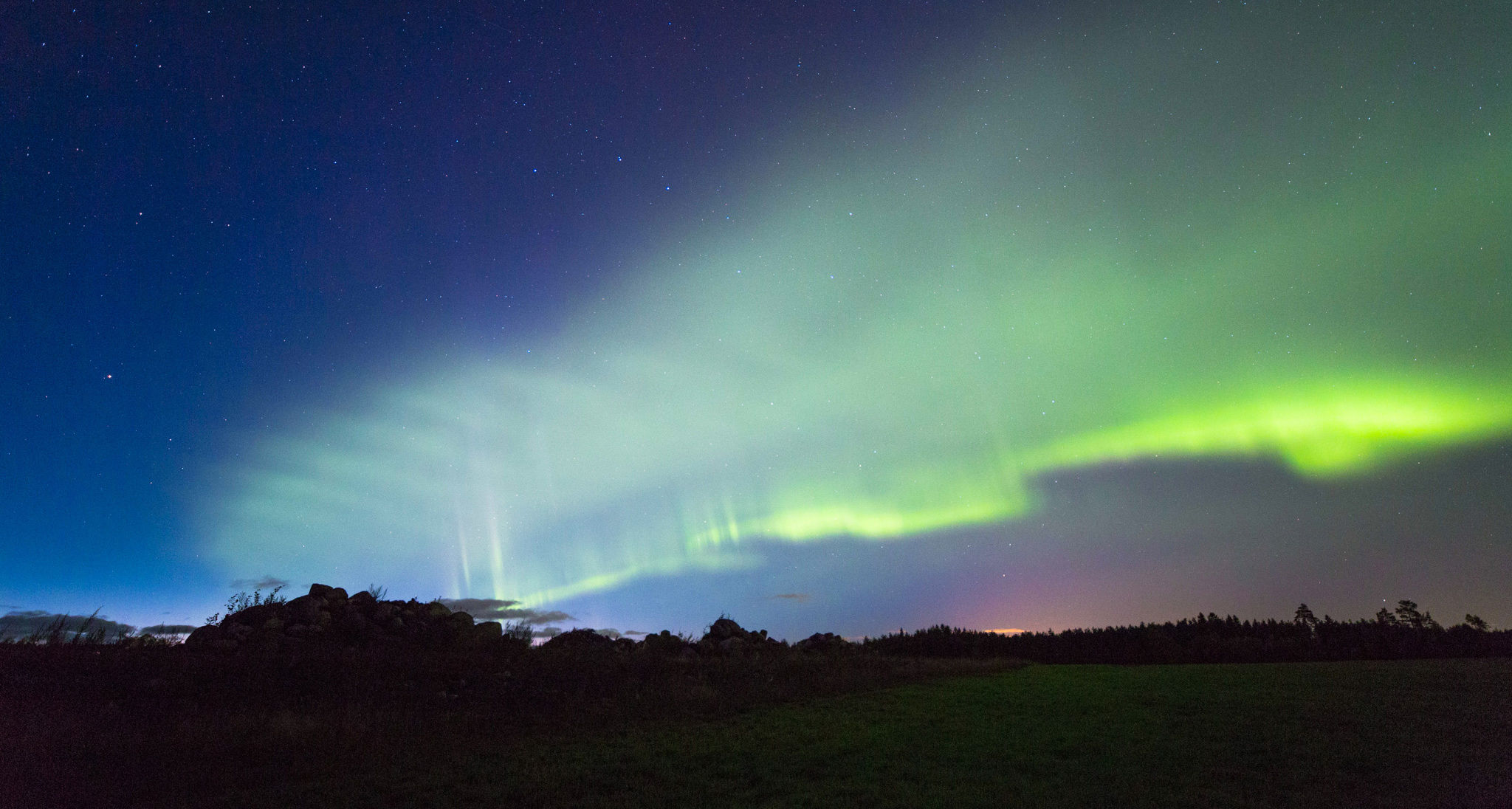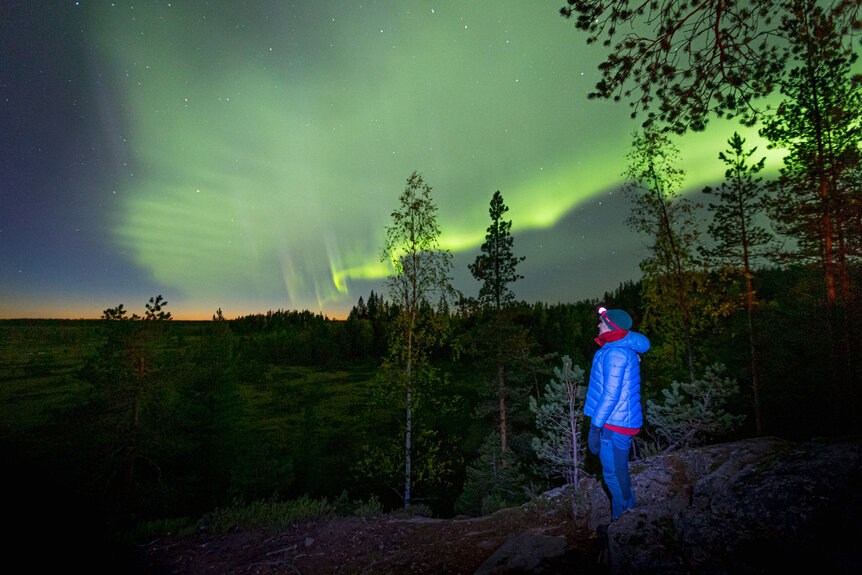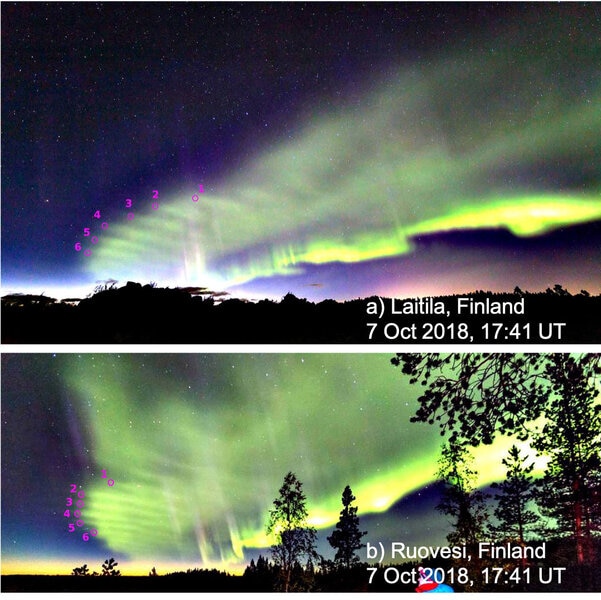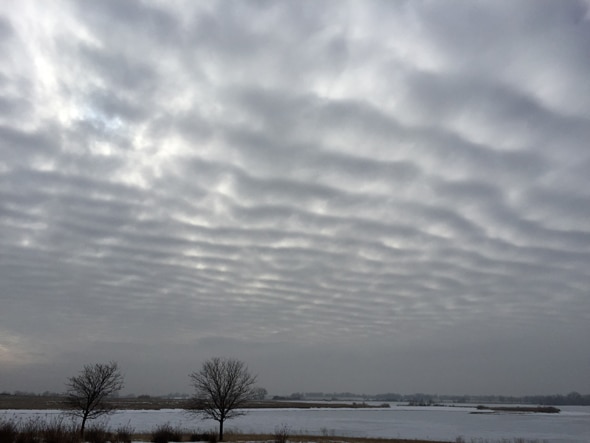Create a free profile to get unlimited access to exclusive videos, sweepstakes, and more!
Citizen scientists discover a new type of aurora: Dunes

People have been observing the aurorae for millennia, and aiming scientific instruments at them for decades to try to understand them better, so you'd think by now we'd know about every kind of aurora there is.
Except nope. A new kind has just been discovered, and it was found due to observations by aurora chasers, people who brave the cold high latitudes to photograph the "northern lights"!
An aurora occurs when subatomic particles from the Sun slam into the Earth's (or any planet's) atmosphere. The particles are moving extremely rapidly, and when they hit an atom or molecule in the upper atmosphere they ionize it, blasting off an electron or two. When the electron recombines with its parent atom, it emits light at a fairly specific wavelength, or color. That color depends on the atom involved; the common green color seen in aurorae is from oxygen, for example. Red can be from oxygen atoms as well, and also from molecules of nitrogen.
Charged particles like electrons or protons are affected by magnetic fields, so the incoming particles are funneled by Earth's magnetic field toward the poles. It can also guide them into sheets, creating lovely sinuous glowing arcs, curtains, and ribbons in the sky as the particles plunge down.
Sometimes, though, a more diffuse glow is seen moving away from an arc, in a direction perpendicular to it, like a curtain hanging down from a rod. In October 2018, just such a glow was seen in photos taken by chasers, and it was peculiar: There was a fishbone pattern in it, parallel ripples pointing to the south. Because they look like ripples in sand blown by wind, this aurora has been dubbed "the dunes."
This caught the attention of scientists who research aurorae. They studied them and published a paper analyzing the new structures. Happily, two photos were taken at the same time of this phenomenon from spots in Finland 172 kilometers apart, allowing scientists to triangulate on them (using stars in the background to get a good fix on them as well). They found that these dunes were at an altitude of about 100 km above the Earth's surface, which is roughly where most aurorae form.
But why the ripples? What is causing this striking and frankly weird formation?
We see parallel features like these in the atmosphere pretty often, though usually at much lower altitude. They're called gravity waves, and are similar to waves in water. If you have a stable layer of air in the atmosphere, and something disturbs it — say, an incoming cold front, or the air is blowing over a mountain — the air will get pushed up. But then gravity kicks in and pulls it back down. This establishes an oscillation, an up-and-down motion that flows downstream. In the lower atmosphere, clouds can form as water vapor cools in the rising air, then dissolve when the air dips down again. This can create huge trains of parallel stripey clouds, which I've seen many times (I live east of the Rocky Mountains, which make gravity waves in the air fairly often).
Gravity waves are seen, though very rarely, in the mesosphere, a layer of the Earth's atmosphere that stretches from an altitude of about 50–85 km. They're called mesospheric or undular bores, and they're difficult to study. They probably form in a similar way to ones at a lower altitude, when moving air collides with a more stable layer.
This, the scientists think, may be what causes the dunes. When the mesospheric air rises due to the wave, it compresses the air above it. That changes the density of oxygen atoms in the air, which will mimic the ripple pattern. If this happens when a bunch of particles from the Sun flung our way plunge down onto the atmosphere, then they essentially illuminate that density change! The places where there are more atoms will shine a little more brightly, since there are more atoms to glow.
But there’s more: Mesospheric bores can also be caused when a lot of energy is dumped into the atmosphere above the stable layer. This is called Joule heating, and might occur because the Sun's particles are hitting the atmosphere. They have a lot of energy, which they transfer to the atmosphere at heights of 100 km or so.
So it’s possible that the aurora effect is illuminating these waves, but it's also possible it's causing them! There's more evidence for this, too: The diffuse auroral glow where the ripples are seen is pretty common, but only sometimes has ripples in it. Gravity waves are also common, so you'd expect to see rippling a lot more often than we actually do. That implies something else is helping form them. Joule heating is a pretty good guess as to what that second phenomenon is.
I love everything about this story. A new type of aurora, seen by "amateurs," analyzed by scientists, and possible causes found. And the photos of it are very cool, too!
As a bonus, the mesosphere is difficult to study, as there aren't a lot of features in it that are easy to observe. The dunes provide a new window into this atmospheric layer, so at least that aspect of it can be studied better. And with so many photographers heading to the high latitudes now and taking spectacular digital images of the aurorae, we'll only get more data on them, which means understanding them even better.






























